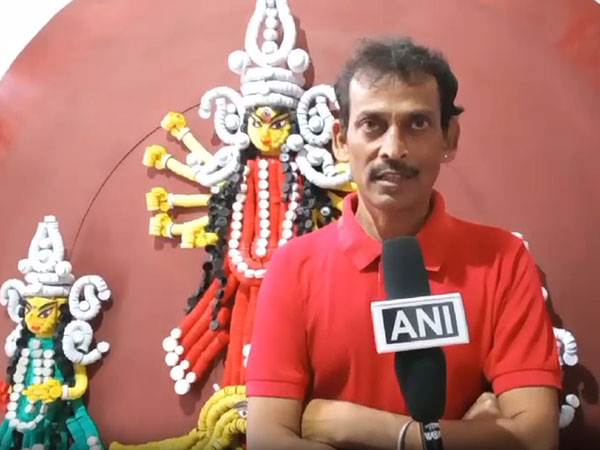From Waste to Wonder: Durga Idol Crafted from 8,000 Plastic Caps
Artist Pradip Kumar Ghosh from Assam is creating a Durga idol with over 8,000 discarded plastic caps, highlighting environmental awareness during the Navratri festival. Known for sustainable art, Ghosh's work aims to inspire discussions on art's role in addressing plastic pollution while celebrating India's Durga Puja traditions.

- Country:
- India
In an extraordinary fusion of art and environmental consciousness, Assamese artist Pradip Kumar Ghosh is making waves with his latest creation: a Durga idol crafted from more than 8,000 discarded plastic bottle caps. The five-foot art piece, set to be unveiled during the Navratri festival, aims to symbolize sustainability and raise awareness about urgent environmental issues.
Ghosh is celebrated for his eco-friendly idols crafted from unconventional materials such as sugarcane waste and bicycle tubes. His latest work, to be displayed at Charmain Road's Durga Puja Pandal, underscores the critical problem of plastic pollution. 'This year's idol carries a message about environmental change. Art should not only be beautiful but also meaningful,' the artist stated, drawing widespread praise for his advocacy of sustainability through art.
The innovative idol is expected to ignite conversations on the intersection of art and environmental responsibility. Speaking to ANI, Ghosh noted, 'The theme of this year's Navratri festival revolves around environmental consciousness. My creation, crafted entirely from waste, delivers a clear message about climate issues.' A school teacher by profession, he crafts these idols to serve as a poignant reminder of pollution's harmful effects and the potential for repurposing waste into meaningful art. Durga Puja, an integral part of Indian culture and widely celebrated across Eastern India, embodies the triumph of good over evil, serving as both a religious and cultural cornerstone.
(With inputs from agencies.)
ALSO READ
Assam Cabinet Expansion Unveils Ambitious Infrastructure Plans
Assam Police Nab Suspects, Seize Heroin in Amingaon Bust
Assam to conduct evaluation of schools through ‘Gunotsav’ in Jan-Feb 2025
Assam Governor attends celebrations of All India Civil Defence and Home Guards Day
CM Himanta Sarma invites Union Ministers Sarbananda Sonowal and Nirmala Sitharaman to Advantage Assam Summit 2.0










